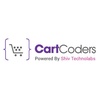In the world of ecommerce, having a well-optimized product page is crucial for online success. With millions of products available on various online platforms, it's essential to ensure that your product stands out and is easily discoverable by potential customers. One effective way to achieve this is through search engine optimization (SEO). By implementing a game-changing SEO strategy for your ecommerce product pages, you can significantly improve your visibility in search engine results and attract more organic traffic.
In this article, we will explore various SEO techniques and strategies to optimize your ecommerce product pages and boost your online success. Whether you're a professional eCommerce entrepreneur or just starting out, these tips from our eCommerce SEO services provider, will help you to dominate the digital marketplace. Let's embark on this SEO journey and unlock the potential of your eCommerce business.
What Is Ecommerce Product Page SEO?

Ecommerce Product Page SEO is the practice of optimizing individual product pages on an e-commerce website to improve their visibility and ranking in search engine results. It involves keyword research, creating unique and descriptive product titles, writing compelling product descriptions, using high-quality images, implementing structured data markup, encouraging user reviews and ratings, optimizing page load speed, ensuring mobile optimization, and promoting social sharing and backlinks. The goal is to attract organic traffic, increase conversions, and enhance the overall visibility and success of the e-commerce store.
Best Tips for Ecommerce Product Page SEO

URL Optimization
URL optimization is the process of creating search engine-friendly URLs for your product pages. A well-optimized URL should be concise, descriptive, and include relevant keywords. Avoid using long strings of numbers or irrelevant characters in your URLs. For example, instead of using "www.example.com/product?id=12345," use "www.example.com/product-name" for better SEO.
Product Title SEO
The product title is one of the most important elements on your product page. It not only helps customers understand what the product is but also plays a crucial role in SEO. Include relevant keywords in your product title, preferably at the beginning, to improve your search engine rankings. However, make sure your title remains compelling and easy to read for human users.
The Product Page H1 Tag
The H1 tag is an HTML tag that defines the main heading on a webpage. It is an important element for both users and search engines. Ensure that your product page has a unique and keyword-rich H1 tag that accurately describes the product. This helps search engines understand the context of your page and improves its visibility in search results.
Meta Description Optimization
The meta description is a brief summary that appears below the page title in search engine results. Although it does not directly impact search rankings, a well-crafted meta description can significantly improve click-through rates. Optimize your meta description by including relevant keywords, highlighting the product's unique selling points, and maintaining a compelling and concise description.
Optimize Your Breadcrumb Menu
A breadcrumb menu is a navigation aid that shows the hierarchical structure of a website. It helps users understand their current location and navigate back to previous pages. Search engines also utilize breadcrumb menus to understand the structure and hierarchy of your website. Optimize your breadcrumb menu by using relevant keywords and ensuring that it accurately represents the product's category and subcategories.
Product Description Optimization
The product description is your opportunity to provide detailed information about the product and persuade potential customers to make a purchase. Optimize your product description by including relevant keywords naturally throughout the text. Focus on providing unique and compelling content that highlights the product's features, benefits, and usage. Avoid duplicate content and ensure that your descriptions are easy to read and understand.
Image Optimization
High-quality images are essential for showcasing your products effectively. However, images also play a crucial role in SEO. Optimize your product images by using descriptive filenames that include relevant keywords. Additionally, compress the images to reduce their file size and improve page loading speed. Finally, add alt text to your images, which is a brief description that helps search engines understand the content of the image.
Video Optimization
Videos are becoming increasingly popular for showcasing products on ecommerce websites. They provide an engaging and interactive experience for users. When optimizing your product page, consider incorporating videos to enhance the user experience. Optimize your videos by providing accurate titles, descriptions, and relevant tags. Host the videos on popular platforms such as YouTube and embed them on your product pages to increase visibility and reach.
Product Schema Markup
Schema markup is structured data added to HTML code to provide search engines with additional information about your product. Implementing product schema markup on your ecommerce product pages helps search engines understand the product's details, such as its name, brand, price, availability, and reviews. This rich data can be displayed in search engine results, increasing the visibility and click-through rates for your products.
Open Graph meta tags
Open Graph meta tags are HTML tags that allow you to control how your product pages appear when shared on social media platforms like Facebook, Twitter, and LinkedIn. By optimizing these tags, you can customize the title, description, and image that appear when someone shares your product page. This optimization helps to improve the visual appeal and click-through rates when shared on social media, ultimately driving more traffic to your product pages.
Product Reviews and Ratings
Product reviews and ratings are crucial for building trust and credibility with potential customers. Positive reviews and high ratings can influence purchasing decisions. Encourage customers to leave reviews and ratings for your products and prominently display them on your product pages. Implement structured data markup for reviews to make them more visible in search engine results. The presence of genuine customer reviews can also improve your product page's SEO by adding fresh and unique content.
User-Generated Content
User-generated content (UGC) refers to content created by your customers, such as reviews, testimonials, and product photos. UGC adds authenticity and social proof to your product pages. Encourage customers to share their experiences with your products and feature UGC on your product pages. This not only enhances the user experience but also improves your SEO by providing relevant and engaging content.
Cross-selling
Cross-selling is the practice of suggesting related or complementary products to customers based on their current purchase or browsing history. Implementing cross-selling strategies on your product pages can increase average order value and customer satisfaction. By showcasing relevant cross-selling options, you can encourage customers to explore and purchase additional products from your website. This strategy enhances the overall user experience and can positively impact your SEO by increasing the time spent on your product pages.
Conclusion:
Implementing a comprehensive SEO strategy for your ecommerce product pages is crucial for online success. By optimizing elements such as URL structure, product titles, H1 tags, meta descriptions, breadcrumb menus, product descriptions, images, videos, schema markup, open graph meta tags, reviews, user-generated content, and cross-selling, you can significantly improve your visibility in search engine results and attract more organic traffic. Remember to focus on providing valuable and unique content that caters to both search engines and human users. By consistently applying these SEO techniques, you can enhance the overall user experience, drive more traffic to your product pages, and ultimately increase conversions and online success.


No comments yet